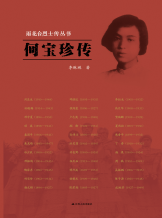
主要责任者: 李琳琳
责任方式: 著
出版者: 江苏人民出版社
出版地: 南京
字数: 174 千字
页码: 1-189
开本: 16
中图分类号: K827=6
语种:中
定价:38.00
出版时间:2016-06
丛书多卷书否:是
丛书名:雨花台烈士传丛书
书目简介:本册工具书是雨花台烈士传丛书之一,共收录37条词条。
被引频次:2
| 词条 | 何宝珍传 |
| 类别 | 中文百科知识 |
| 释义 |  主要责任者: 李琳琳 责任方式: 著 出版者: 江苏人民出版社 出版地: 南京 字数: 174 千字 页码: 1-189 开本: 16 中图分类号: K827=6 语种:中 定价:38.00 出版时间:2016-06 丛书多卷书否:是 丛书名:雨花台烈士传丛书 书目简介:本册工具书是雨花台烈士传丛书之一,共收录37条词条。 被引频次:2 |
| 随便看 |
开放百科全书收录579518条英语、德语、日语等多语种百科知识,基本涵盖了大多数领域的百科知识,是一部内容自由、开放的电子版国际百科全书。